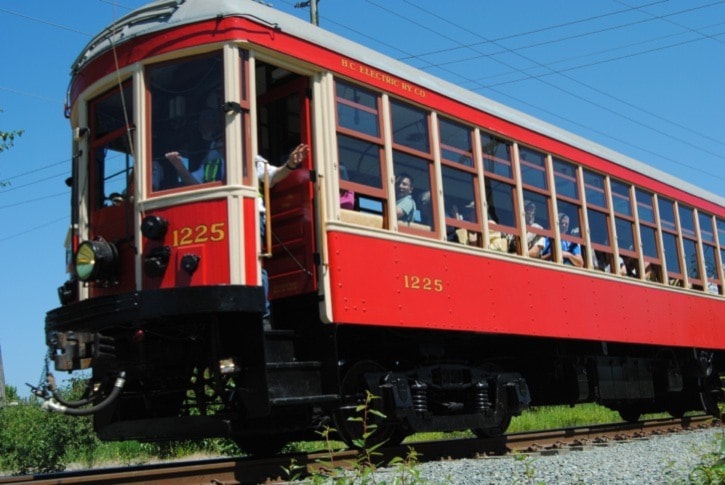One of the new attractions this summer in this area is a must-see for anyone interested in the early history of Langley.
Fraser Valley Heritage Railway has fully restored a B.C. Electric Railway interurban car, and is now operating it on a five kilometre stretch of the original Fraser Valley interurban corridor, now used by Southern Railway of B.C.
The interurban operates on most Saturdays, Sundays and holidays, with the first trip at 10 a.m. and the last one at 3 p.m. It leaves from and returns to a wonderful replica of the original Cloverdale station, at 176A Street just south of Highway 10.
Fare is $10 for adults, with children half-price.
Car 1225 was actually the very last interurban car used by the BCER, on its Marpole-Steveston line. Its final trip was on Feb. 28, 1958. Interurban service to Richmond lasted until the opening of the Oak Street Bridge.
In Langley and the rest of the Fraser Valley, interurban service ended on Oct. 1, 1950, with a ceremonial “last run” taking place on Sept. 30. That run featured interurban trains leaving from New Westminster and Chilliwack respectively, and meeting in Langley, where there was a lunch at Newlands Golf Club.
Langley had interurbans for 40 years, and they were vital to the growth of the area. In addition to providing regular transportation for people, with three trains a day each way, they hauled milk, mail and freight. The daily milk trains allowed farmers from many remote areas of Langley to ship milk to dairies in Vancouver. Mail service was much improved as well, and express service allowed people to quickly obtain items they had ordered from the city.
One of the least-remarked but most important aspects of the building of the interurban line was its key role in the spread of electricity. Because the trains were powered by electricity, provided by the company’s dams, BCER had to erect power lines and substations (the Coghlan substation on 256 Street still stands). Electric lines were built to other areas, from the transmission line along the railway. This permitted power to flow to commercial districts and homes in those areas, and eventually to farms.
The coming of electricity to farms was revolutionary, as it allowed many more tasks to be performed by fewer people.
I recently looked at an old photo of Murrayville, taken before the coming of the electric lines. The commercial core looks very different without any power lines, and the services offered to people were, of necessity, very limited by the lack of power.
Power lines were strung to many areas, with Langley Prairie (now Langley City) the most notable beneficiary in the early days. It quickly became the shopping hub of the entire municipality.
Electricity and transportation allowed Langley residents to more fully participate in the advances of the 20th century, and paved the way for the growth and development of this community that continues today.
